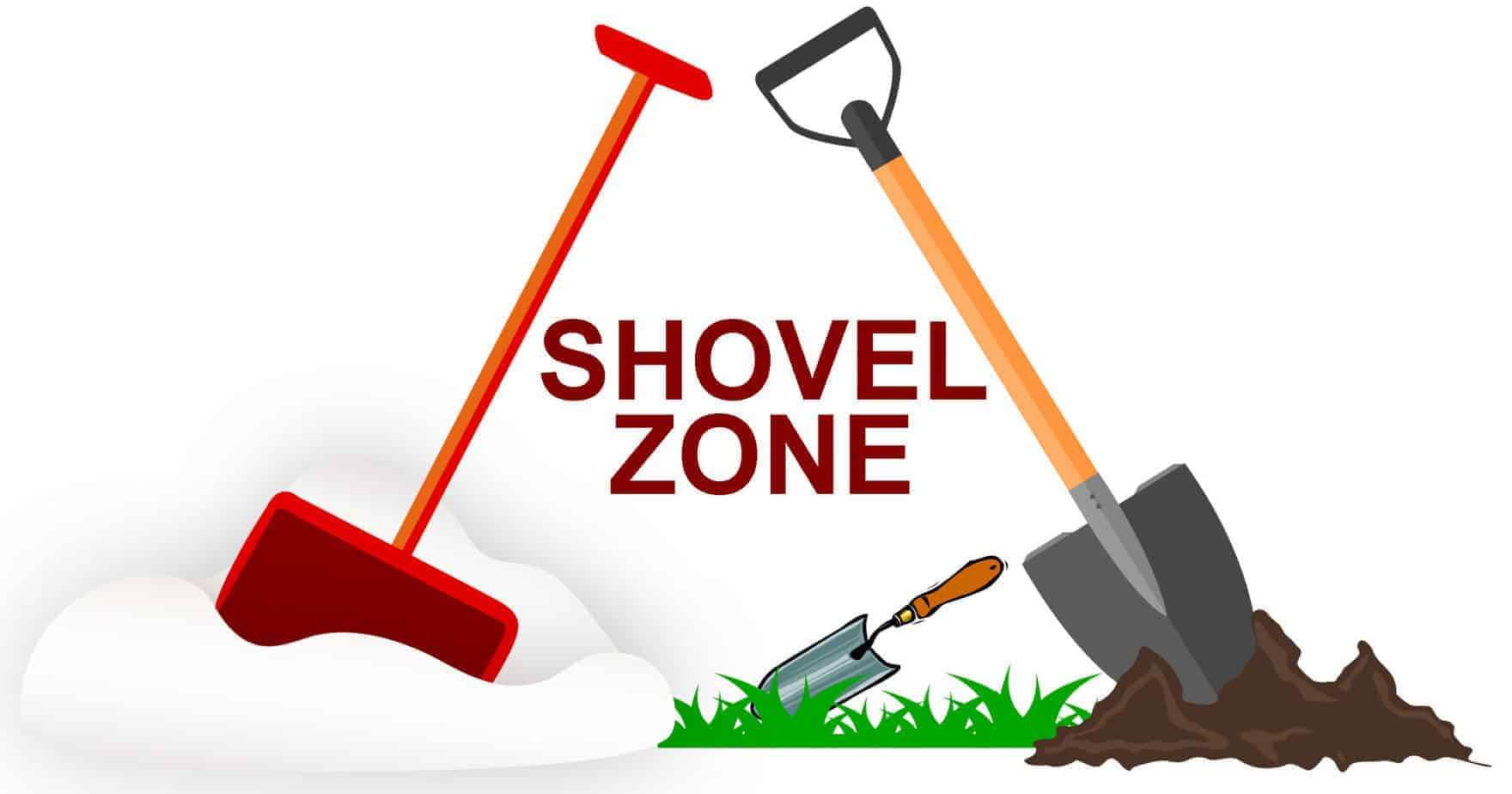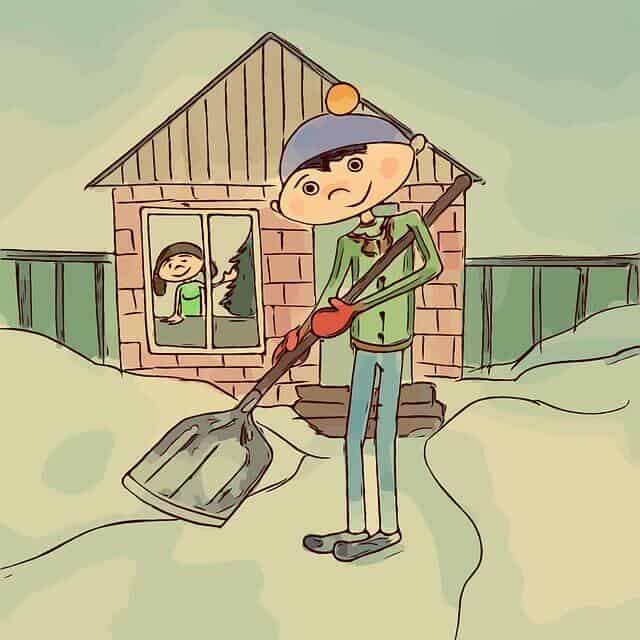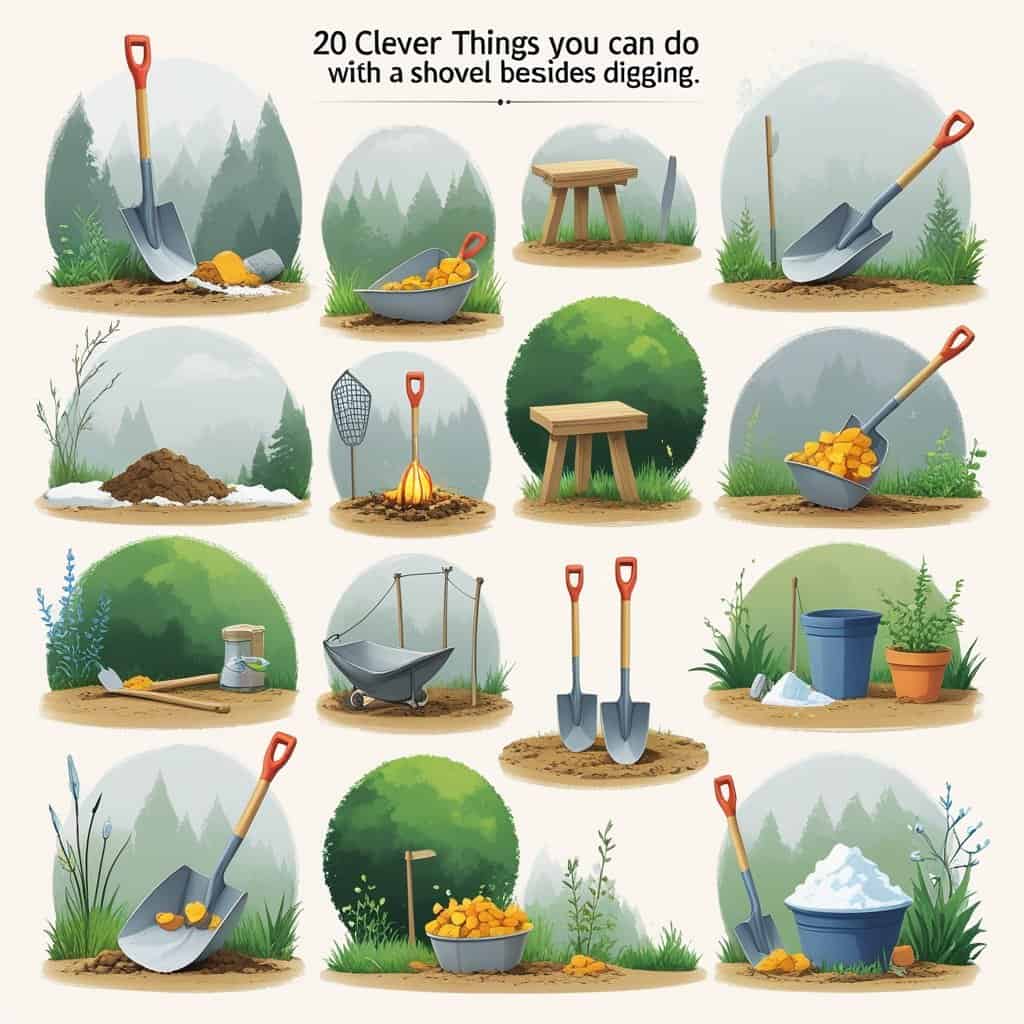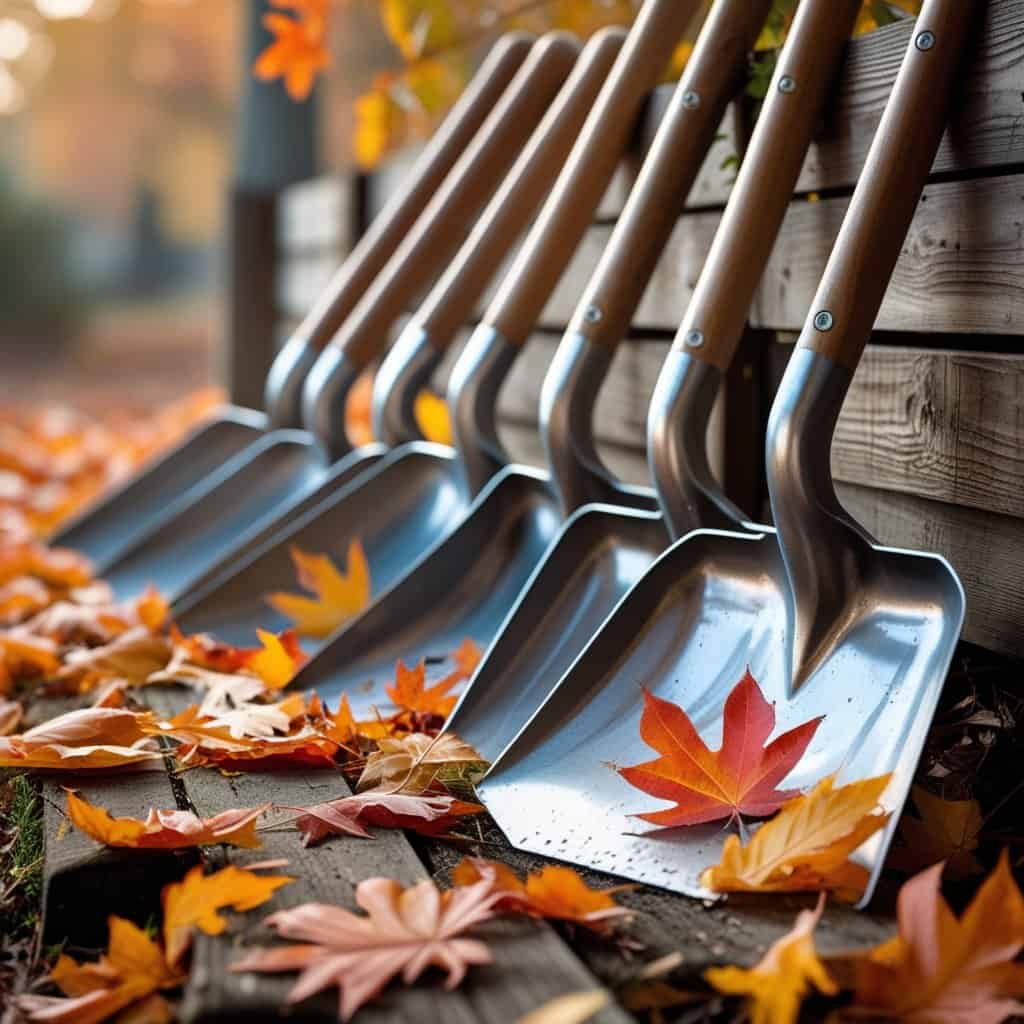Shoveling snow may look simple, but poor technique can leave us with sore muscles or even a serious back injury. The safest way to shovel snow without hurting your back is to push the snow when possible, lift only small amounts at a time, and bend at the knees instead of the waist.
To effectively shovel snow, it is important to understand the right techniques that prevent injury. Always ensure you have the proper tools before you begin to shovel snow.
When it comes to the right way to shovel snow, remember that taking breaks is essential for avoiding fatigue.
With a few smart steps, we can clear the driveway without ending up in pain.
By preparing our bodies, we set ourselves up for success when we shovel snow.
Choosing the right shovel is crucial when we shovel snow, as it can make the task easier and safer.
A strong body is essential for those who shovel snow regularly to avoid injury.
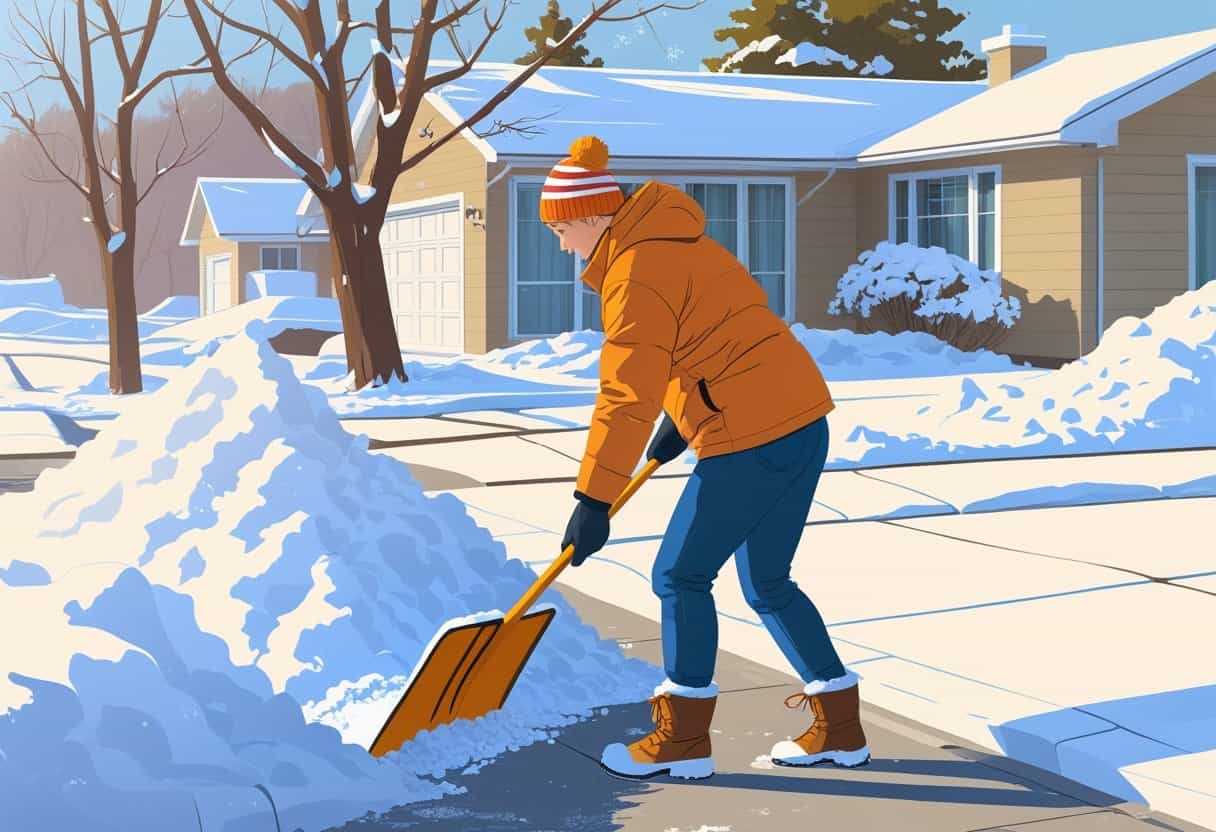
Before we grab a shovel, it helps to prepare our bodies. Warming up, stretching, and using the right muscles can make a big difference.
When we shovel snow, staying hydrated is just as important as knowing the right techniques.
The tools we choose also matter—using a lightweight shovel with the right handle length reduces strain and keeps us moving more efficiently.
Table of Contents
Prepare Your Body Before Shoveling
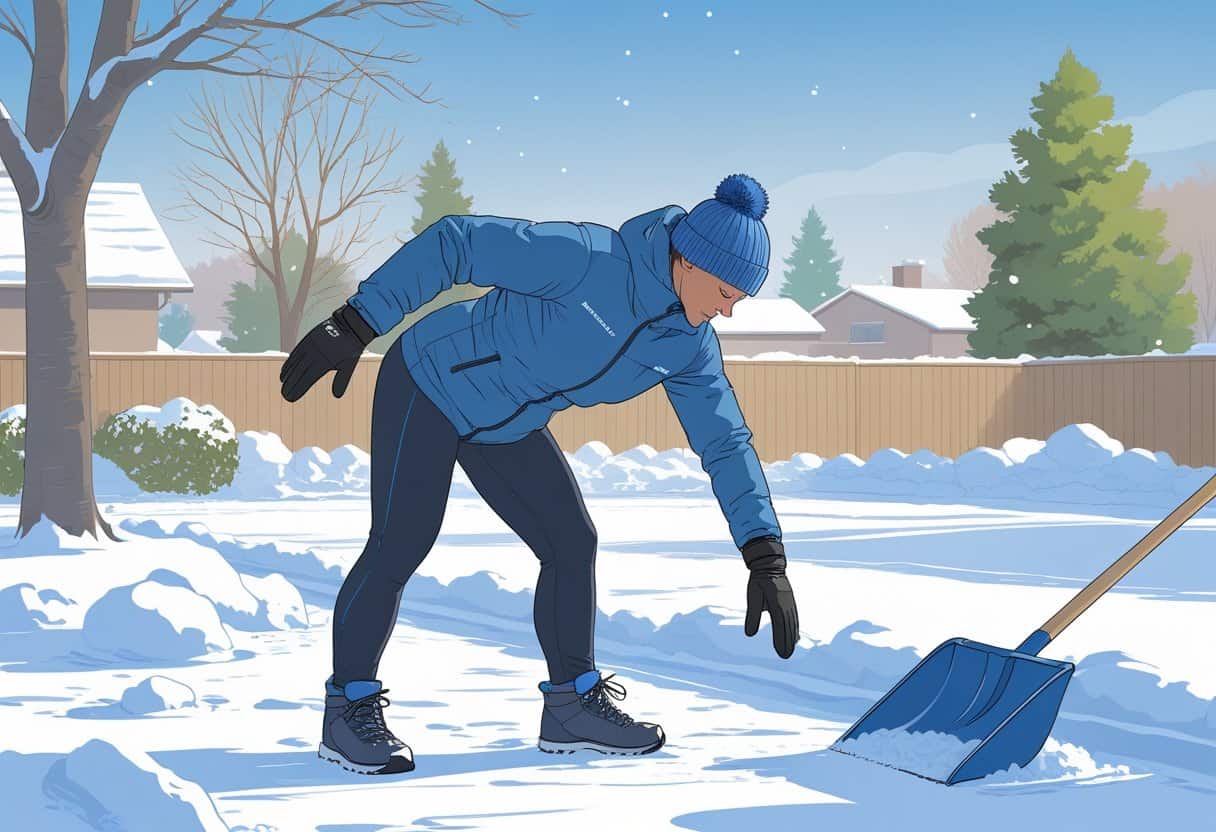
We reduce the risk of back pain during snow removal when we prepare our bodies with simple steps. Stretching, dressing for the cold, and staying hydrated all make shoveling safer and less tiring.
Warm Up With Dynamic Stretches
Starting cold puts extra stress on the spine and muscles. A few minutes of dynamic stretching helps loosen stiff joints and increases blood flow before we begin snow shoveling.
This lowers the chance of strains and makes lifting and pushing snow easier. We should focus on movements that warm the back, legs, and shoulders.
Examples include:
- Arm circles to loosen shoulders
- Torso twists to prepare the spine
- Leg swings to activate hips
- Walking lunges to warm the legs
Unlike static stretches, dynamic movements keep us moving and raise our heart rate. This prepares our muscles for the physical effort of repeated lifting and pushing.
Even five minutes of activity can make a noticeable difference.
Dress Appropriately for the Weather
Cold temperatures tighten muscles and make them more prone to injury. Wearing layers helps us maintain warmth and flexibility during snow removal.
The best choice is insulating but breathable clothing that keeps heat in while allowing movement. A good setup includes:
- A moisture-wicking base layer
- An insulating middle layer
- A water-resistant outer layer
Footwear also matters. Boots with non-slip soles improve traction and lower the chance of slipping on ice.
Gloves protect our grip and keep hands warm, which helps us handle the shovel safely. According to Spine-Health, dressing properly improves circulation and reduces fatigue, making it easier to maintain good posture while shoveling.
Hydrate Before and During Snow Removal
Cold weather often masks thirst, but we still lose fluids through exertion. Dehydration reduces muscle performance and increases fatigue, which can raise the risk of back pain while shoveling.
Proper footwear can significantly affect how we shovel snow and keep us safe.
We should drink water before heading outside and take short hydration breaks every 15–20 minutes. Warm fluids like tea can also help maintain body temperature.
It is best to avoid alcohol or heavy caffeinated drinks before snow removal. Both can dehydrate us and affect coordination.
Keeping a thermos of warm water or a sports drink nearby ensures we stay hydrated throughout the task.
Make sure to take breaks while you shovel snow, as this can help prevent fatigue.
Choose the Right Equipment
The tools we use can make snow removal safer and less tiring. By focusing on shovel design, snow clearing machines, and proper footwear, we can reduce strain and lower the risk of slipping or injury.
Select an Ergonomic Snow Shovel
An ergonomic snow shovel helps us move snow with less bending and twisting. These shovels often have a curved or adjustable handle that keeps our backs straighter while lifting.
A lightweight material, such as aluminum or plastic, also reduces the effort needed. We should look for a shovel with a handle that reaches about chest height.
This prevents us from hunching over or overextending. A wide, non-slip grip makes it easier to hold even with thick gloves.
Another key factor is blade size. A smaller blade reduces the temptation to overload the shovel, which can strain our backs.
While it may take more passes, the lighter loads are safer. For deeper snow, a shovel with a metal edge can cut through packed ice more effectively.
Using an ergonomic shovel is one of the simplest ways to protect our backs during snow removal.
Consider a Snow Blower for Heavy Snow
When we face heavy snow, a snow blower can save both time and physical effort. Instead of lifting and tossing snow, we guide the machine while it does the work.
This is especially helpful for long driveways or areas with frequent storms. Snow blowers come in different types:
- Single-stage: Best for light to moderate snow on flat surfaces.
- Two-stage: Handles deeper, heavier snow and can manage uneven terrain.
- Three-stage: Designed for very heavy, wet snow and large areas.
We should match the machine to the typical snowfall in our area. Using a snow blower reduces repetitive lifting and twisting, which lowers the chance of back injuries.
For those with ongoing back problems, a blower may be a safer long-term solution than shoveling.
Use Proper Footwear for Traction
Good footwear is just as important as the shovel or machine we choose. Snow and ice increase the risk of slipping, which can cause falls and sudden back injuries.
Boots with deep, non-slip treads give us better grip and stability. We should pick insulated, waterproof boots to keep our feet warm and dry.
Cold, wet feet make us more likely to rush, which can lead to mistakes. A snug but comfortable fit also helps us stay balanced while lifting or pushing snow.
For icy conditions, we can add traction cleats or slip-on ice grips to our boots. This extra layer of security reduces the chance of a fall.
According to Stamford Hospital, proper snow boots play a key role in preventing injuries during shoveling.
By combining sturdy footwear with careful steps, we can maintain balance and protect our backs throughout the task.
Master Safe Shoveling Techniques
We can reduce the risk of back injuries during snow shoveling by focusing on how we move, how we lift, and how we handle the snow itself. Using correct posture, safe lifting methods, and efficient techniques helps protect our spine and muscles.
Maintain Proper Posture and Body Mechanics
Using tools that help us shovel snow efficiently can prevent injuries.
To effectively shovel snow, break the task into smaller sections to avoid overwhelming yourself.
When we shovel snow, posture is one of the most important factors. Standing upright with our shoulders back and knees slightly bent keeps the spine in a neutral position.
This alignment reduces strain on the lower back. We should avoid twisting at the waist.
To prevent injury while we shovel snow, adopting good techniques and taking care of our bodies is key.
Instead, we turn our whole body by moving our feet. Twisting while holding weight is one of the most common causes of back pain.
It helps to keep the shovel close to our body. The farther the weight is from the spine, the more pressure it places on the lower back.
A shovel with a handle that reaches above the waist allows us to stay upright and avoid excessive bending.
Lift With Your Legs, Not Your Back
When lifting snow, we should bend at the knees and hips, not at the waist. This allows our leg muscles—the strongest muscles in the body—to do the work.
Keeping the back straight while lifting prevents unnecessary stress on the spine. We should grip the shovel with one hand near the top of the handle and the other closer to the blade.
This hand placement gives us more control and balance when moving heavy snow. Carrying smaller loads is safer than trying to lift large, heavy piles.
Take your time and maintain good form as you shovel snow to minimize the risk of injury.
Overloading the shovel can quickly lead to fatigue and strain. If the snow is wet and heavy, it is better to take several lighter scoops.
Push Snow Instead of Lifting When Possible
Pushing snow is safer than lifting it. By using the shovel as a plow, we can move snow forward without having to raise it off the ground.
This reduces the stress on our back and shoulders. We should keep our knees slightly bent and use our body weight to push.
This allows the legs and core to share the effort instead of relying only on the arms. Shoveling frequently during a storm makes pushing easier because the snow is lighter and less compact.
According to Mass General Brigham, clearing smaller amounts at a time lowers the risk of overexertion and back injuries.
Prevent Back Strain During Snow Removal
We can reduce the risk of back pain during snow removal by pacing ourselves, lifting less weight at once, and keeping our movements controlled. These steps help protect the spine and muscles from unnecessary strain that often leads to back injuries.
Understanding how to shovel snow correctly can lead to a safer experience overall.
Take Frequent Breaks
When we shovel snow, our bodies work harder than we may realize. The cold weather can mask fatigue, making it easy to overexert ourselves.
By resting every 10 to 15 minutes, we give our muscles a chance to recover and prevent them from tightening up. Short breaks also help us check for early signs of strain.
If we feel stiffness in the lower back, pausing allows us to stretch and reset before continuing. This lowers the chance of sudden pulls or sprains.
By following these tips, we can effectively shovel snow without the risk of back injury.
A simple routine during breaks can include:
- Stretching hamstrings and back muscles
- Gently rolling shoulders
- Walking for a minute to keep circulation steady
These small actions keep our bodies flexible and better prepared to handle the repetitive motion of shoveling.
Shovel Small Amounts at a Time
Heavy, wet snow can weigh more than we expect. Lifting large, packed loads puts direct stress on our lower back and increases the risk of injury.
Instead, we should keep each scoop light and manageable. Using a smaller shovel or filling only part of the blade helps us control the weight.
This method reduces strain on the spine and makes the task less tiring over time. According to UChicago Medicine, lighter loads are especially important when snow is wet and dense.
We can also push snow whenever possible instead of lifting it. Pushing keeps the shovel closer to the ground and allows us to use leg and arm strength instead of relying only on the back.
Avoid Twisting Motions
Twisting while lifting snow is one of the most common causes of back injuries. When we rotate at the waist, the spine absorbs uneven pressure that can lead to strains or even herniated discs.
To avoid this, we should keep our shoulders and hips facing the same direction as the shovel. If we need to move snow to the side, we turn our whole body instead of twisting.
It also helps to keep the shovel close to our body. Holding it too far away increases leverage on the lower back, making strain more likely.
Incorporate Exercises to Support Your Back
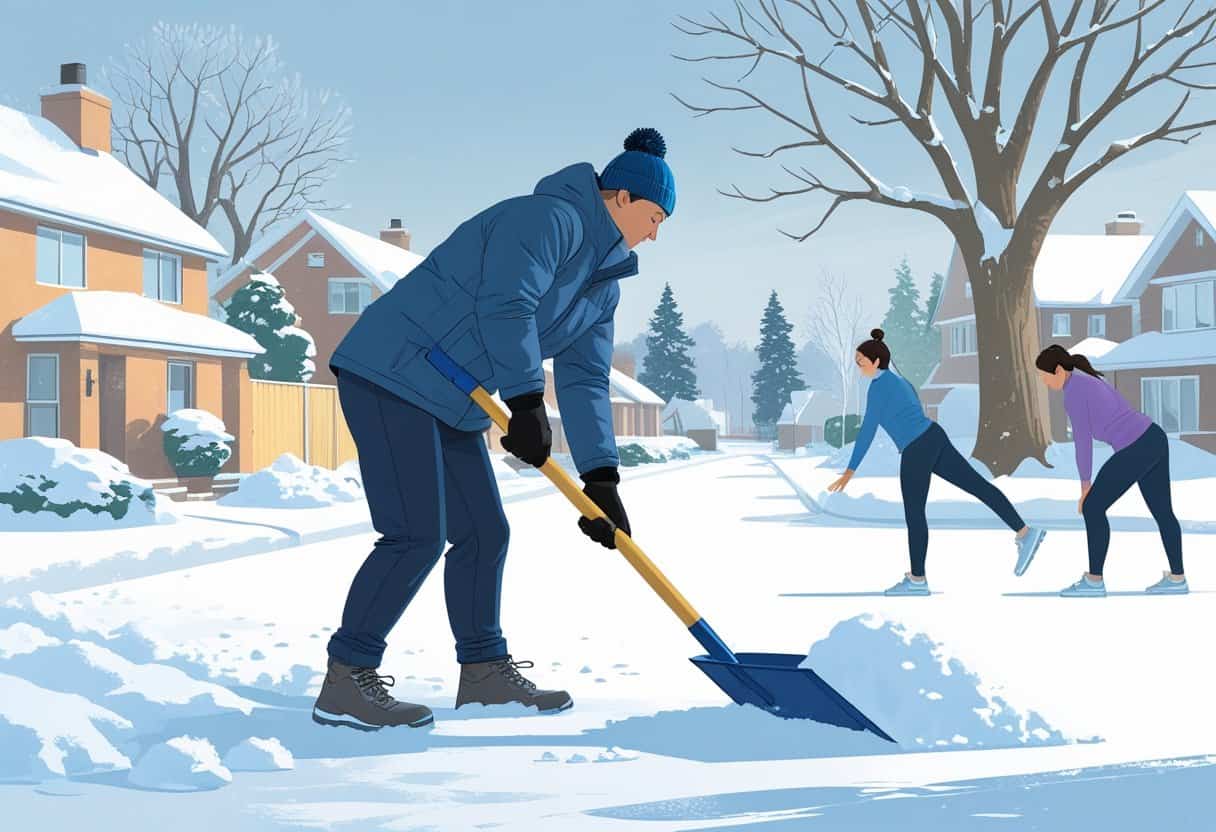
Strengthening the legs, hips, and core gives our back more support during physical tasks like shoveling snow. Building these areas helps us move with better form and lowers the chance of back pain.
Bodyweight Squats and Lunges
We can use squats and lunges to build strength in the legs and hips, which carry much of the load when lifting snow. Stronger leg muscles allow us to bend and lift with less pressure on the spine.
Taking time to prepare your body will help you shovel snow with ease and safety.
When doing squats, we should keep our feet shoulder-width apart, chest up, and back straight. Lower slowly as if sitting in a chair, then push through the heels to stand.
Aim for 2–3 sets of 10–15 reps. Lunges also help balance and stability.
Always remember, the safest way to shovel snow is to use proper technique.
Step forward with one leg, bend both knees to about 90 degrees, then return to standing. Switching legs each time works both sides evenly.
Exercises that strengthen our core can also help when we shovel snow.
These movements train us to bend at the knees instead of the waist, which is key for avoiding back strain while shoveling.
Tips:
- Keep knees aligned over the toes
- Avoid leaning forward at the waist
- Focus on smooth, controlled movement
Core Strengthening Movements
A strong core stabilizes the spine and makes lifting safer. Exercises like planks, bird-dogs, and dead bugs train the abdominal and back muscles to work together.
Remember to stretch before you shovel snow for optimal flexibility and safety.
For planks, we hold the body straight on forearms and toes, keeping the back flat. Start with 20–30 seconds and build up over time.
Bird-dogs involve extending opposite arm and leg while on hands and knees, which improves balance and spinal control. We can also add dead bugs by lying on the back with arms and legs raised, then lowering opposite limbs while keeping the lower back pressed to the floor.
These low-impact movements strengthen the muscles that protect the spine during twisting, bending, and lifting.
Key focus:
- Keep movements slow and controlled
- Engage the core throughout
- Avoid arching or rounding the lower back
Frequently Asked Questions
We can lower our risk of back strain by using proper form, pacing ourselves, and choosing the right tools. Paying attention to body signals, warming up, and lifting correctly all help protect the spine during snow removal.
What is the proper technique to shovel snow to avoid back injury?
We should push snow when possible instead of lifting it. If lifting is needed, we collect small amounts, bend our knees, and keep our back straight.
Twisting while throwing snow increases stress on the spine, so we walk the snow to its destination instead.
Can ergonomic shovels help reduce the risk of back pain?
Yes, ergonomic shovels can make a difference. A shovel with a curved handle or adjustable length helps us maintain a more upright posture.
Practicing proper techniques allows us to efficiently shovel snow without injury.
According to Mass General Brigham, spacing our hands on the handle also improves leverage and reduces strain.
Make sure to prioritize safety when you shovel snow, as this protects your back.
Keep your head up and arms relaxed when you shovel snow, ensuring you maintain good form.
What stretches or warm-up exercises should be done before shoveling snow?
Taking the time to rest will help you effectively shovel snow in a safe manner.
Using proper techniques when you shovel snow can help avoid potential injuries.
We should warm up with light movements such as arm circles, torso twists, or walking in place. Practicing a few mock shovel motions can also prepare our muscles.
Gentle stretching of the back, shoulders, and legs helps increase flexibility and lowers the risk of strain.
How often should breaks be taken when shoveling snow to prevent back strain?
We should take breaks every 15 to 20 minutes, especially during heavy snowfall. Short, regular pauses allow our muscles to recover and prevent fatigue.
Experts recommend pacing ourselves instead of trying to finish the job all at once.
Are there any particular lifting methods recommended to protect your back while shoveling?
Yes, we should lift with our legs, not our back. This means squatting down, keeping the shovel close to the body, and straightening the knees to rise.
Avoiding waist bending and twisting reduces the chance of injury.
What signs of back injury should one be aware of after shoveling snow?
We should watch for pain that lasts more than a few days, numbness, tingling, or weakness in the legs. According to Mass General Brigham, these symptoms may signal a more serious issue such as a herniated disc.
If pain continues beyond 4 to 6 weeks, medical attention is advised.
Pace yourself and be mindful of how heavy the snow is when you shovel snow to prevent injury.
It’s critical to stay mindful while you shovel snow to avoid straining your muscles.
Safety is key when you shovel snow, so understand your limits and take breaks.
